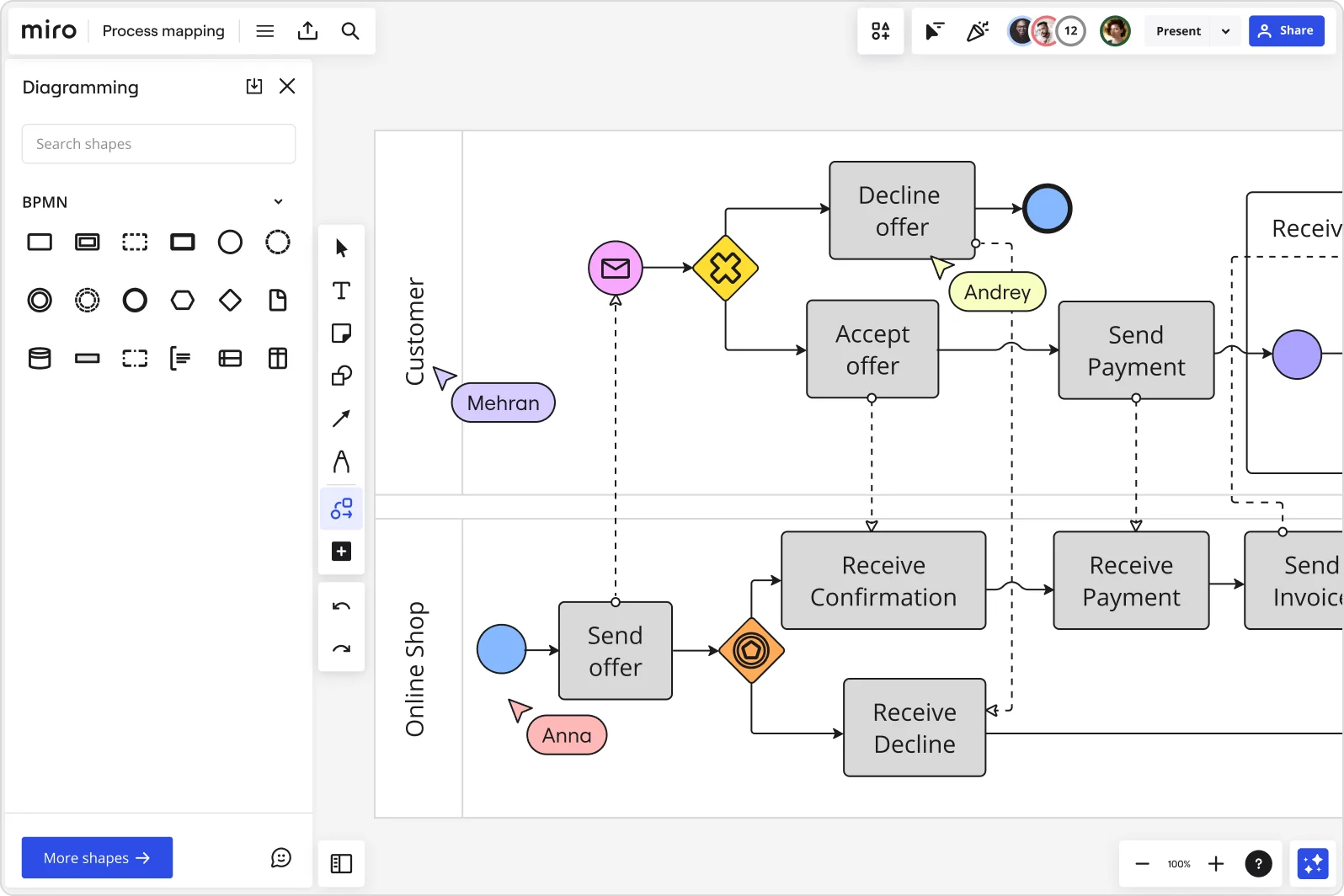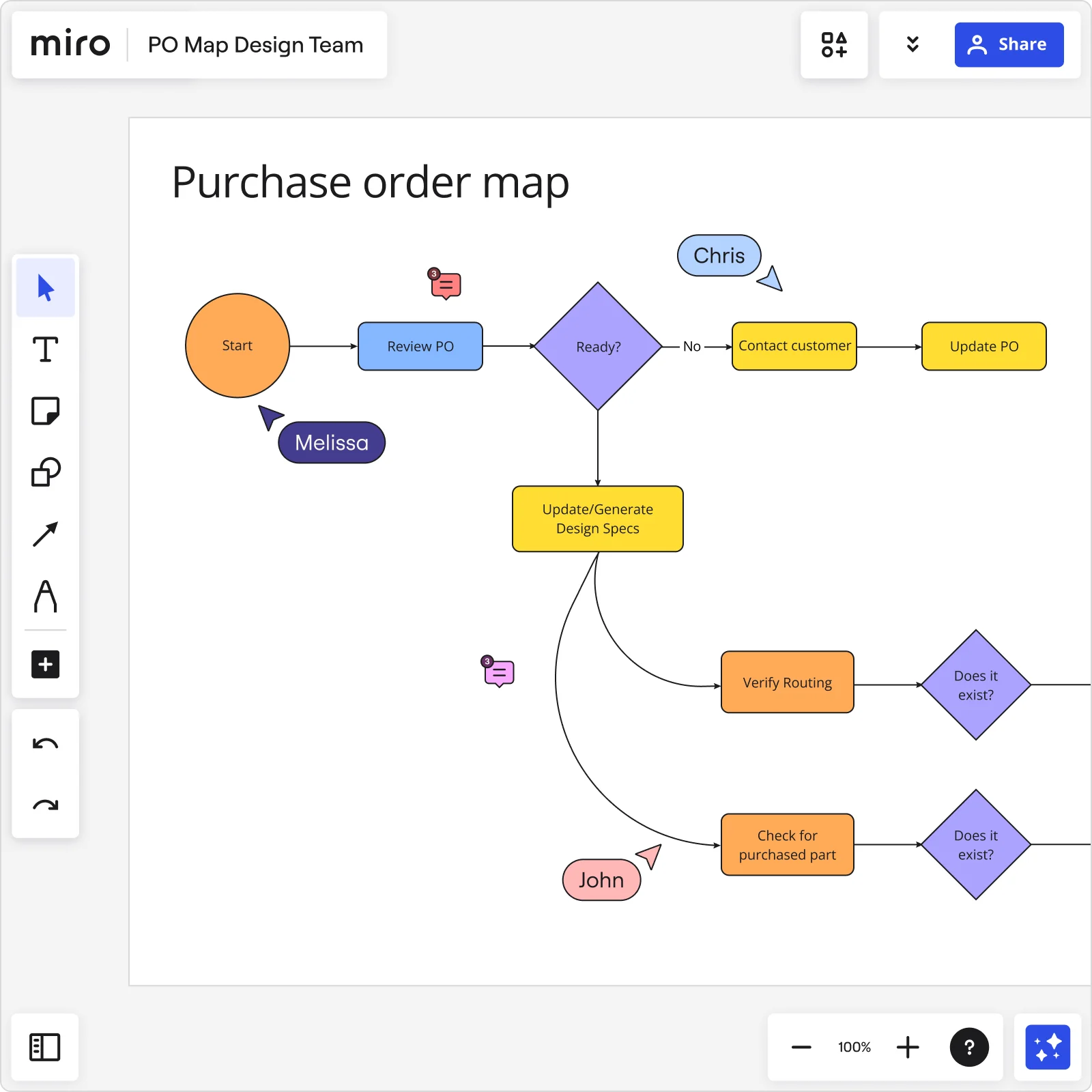
Table of contents
Table of contents
How to document processes and procedures

Documenting processes and procedures
In today's fast-paced business environment, knowing how to document processes and procedures is crucial for maintaining organizational efficiency and ensuring consistent operations.
This comprehensive guide provides expert insights and practical steps to help you effectively document your processes and procedures. By following this systematic approach, you'll enhance productivity, streamline workflows, and lay a solid foundation for your organization's success.

Step 1: Identify and define the processes
To begin, identify and define the processes that require documentation. Understanding how to document processes and procedures starts with clearly articulating the purpose and objectives of each process.
By doing so, you ensure a comprehensive understanding of the areas that need to be documented.
Step 2: Map out the process workflow
Next, visualize the sequence of steps involved in each process. Mapping out the workflow is an essential aspect of how to document processes and procedures.
It helps you understand the interdependencies, decision points, and the overall flow of the process. Utilize flowcharts or diagrams to provide a clear visual representation, facilitating better comprehension and analysis while doing the process mapping.
Step 3: Capture process details
Breaking down each step into manageable actions or tasks is a fundamental part of how to document processes and procedures.
It allows you to capture the essential details of the process, including inputs, outputs, and required resources. Additionally, incorporate relevant rules, regulations, or policies associated with the process to ensure compliance and consistency in your documentation.
Step 4: Choose documentation format
When considering how to document processes and procedures, selecting the most suitable format is crucial.
Text-based procedures, flowcharts, videos, or a combination thereof can effectively capture and communicate the process. Choose the format that best aligns with the complexity and nature of the process you are documenting.
Step 5: Document the procedures
One of the key aspects of learning how to document processes and procedures is providing clear and concise instructions for each action or task. Through effective documentation, you enable others to understand and follow the procedures.
Maintain consistency by utilizing a structured format with headings, subheadings, and bullet points. Visual aids, such as screenshots or diagrams, can be included to illustrate specific steps, enhancing the clarity of your documentation.
Step 6: Standardize the documentation
Standardizing your process documentation plays a vital role in how to document processes and procedures. By establishing a style guide, you ensure consistent terminology and formatting conventions throughout the documentation.
This uniformity enhances readability and comprehension. Incorporating visual elements and color coding where appropriate helps differentiate sections and improves overall clarity.
Step 7: Review and validate the documentation
As you progress in learning how to document processes and procedures, conducting thorough reviews and validations is essential. Engage subject matter experts and relevant stakeholders to provide feedback and ensure accuracy and completeness. Incorporate their input and make necessary revisions to refine your documentation before finalizing it.
Step 8: Publish and distribute the documentation
Choosing the right platform for hosting and distributing your documented processes and procedures is crucial. Ensure accessibility and determine user permissions to maintain control over who can access and modify the documentation.
Communicate the availability and location of the documentation effectively to all relevant stakeholders, enabling easy access and reference.
Step 9: Train users on the documented processes
Properly training users on the documented processes is a key step in understanding how to document processes and procedures. Conduct comprehensive training sessions or workshops to familiarize users with the documentation.
Utilize hands-on exercises and real-life examples to reinforce understanding and practical application. Address questions and concerns to ensure clarity and successful implementation.
Step 10: Maintain and update the documentation
Maintenance and updates are integral to how to document processes and procedures effectively. Establish a systematic approach for version control and tracking changes.
Regularly review and update the documentation as processes evolve. Proactively communicate updates to all relevant stakeholders, ensuring they have the latest information at their fingertips.
Step 11: Monitor and improve the documented processes
Continuously monitoring and improving the documented processes is vital. Collect feedback from users and stakeholders to identify areas for improvement.
Utilize metrics and performance indicators to measure the success of implemented processes. Based on feedback and insights, iteratively enhance the documentation to align with evolving organizational needs.
Conclusion
In conclusion, mastering how to document processes and procedures is crucial for organizations seeking to enhance efficiency and maintain consistent operations. By following the systematic steps outlined in this comprehensive guide, you'll be well-equipped to document your processes effectively.
Clear and concise documentation lays the foundation for streamlined workflows, improved productivity, and organizational success. Embrace the power of well-documented processes and procedures, and elevate your organization to new heights of efficiency and excellence.